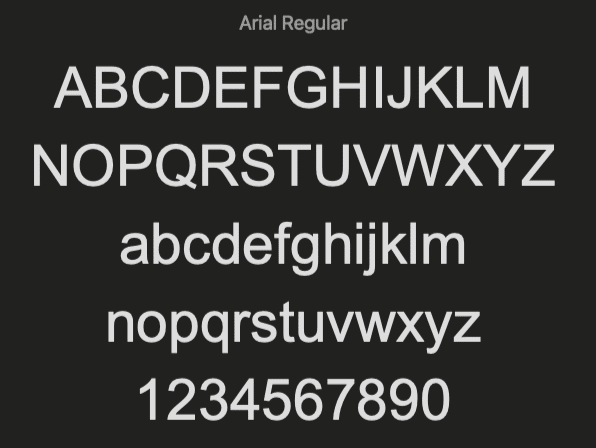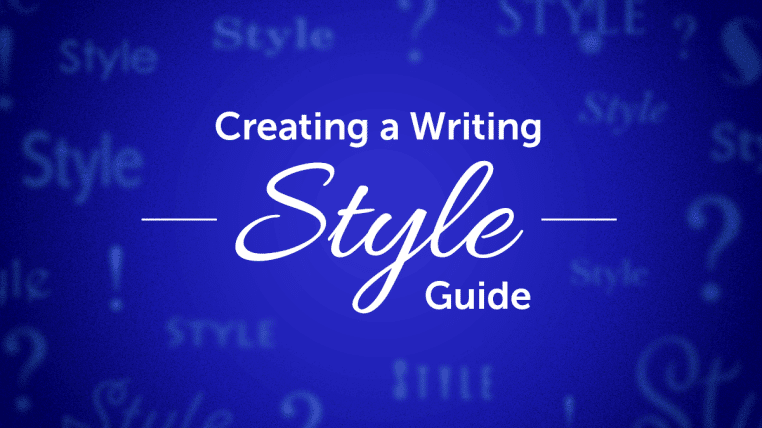Creating a Writing Style Guide for Your Book
While there are writers who can churn out a book (or multiple books) without an outline or plan, it’s uncommon. That’s because a book is a LOT of work and having a plan to guide you makes it easier. If you think along those same lines, then you should consider another important ‘planning’ document for your publishing journey—a style guide.
While you’re working on a book that you plan to publish, a style guide is essential. It will help ensure consistent color, size, spacing, fonts, and more.
What Is a Book Style Guide?
A style guide for a book is “a set of standards for the writing, formatting, and design of documents.” While that definition is most often applied to writing—such as laying out a magazine or newspaper or writing a scholarly article—you can expand that to encompass your entire author brand.
I don’t think you’ll find any marketing expert who argues against brand consistency. Most see it as an important aspect of building a successful business.
You might just be one author trying to sell some books, but that is your business. With a style guide, you can make it easy to keep your books, website, emails, and social media profiles consistent and cohesive.
Creating a Style Guide for Your Book
Ideally, you’ll have your style guide started while outlining and drafting your book. Most of the key elements, like fonts and colors, won’t matter until you start designing your book, but it’s important to think about these things while you’re still writing.
Remember that your style guide defines your brand identity and appeals to your ideal reader. Both might seem a bit removed from the actual book you’re writing. They’re not; everything you create and sell should clearly say you to your readers.
What Does a Style Guide Include?
Basically, anything you want to use repeatedly. That could include fonts, colors, and design aesthetics to specific details for a single story or a series. While you can customize your book style guide to fit your writing and your author brand, I suggest some general ideas that work for most authors.
Author Info
Yes, writing style guides are primarily about writing design and rules. But your style guide can include some standard information about you. Including the exact spelling you’ll use for your own name (which might seem too simple to be worth noting) can be a critical detail. All of these elements are key when creating an author brand.
Do you write Joe Author or Joseph Author? Using a middle initial? If so, is it Joe B Author or maybe JB Author? Or (if you want to get complicated) maybe you go with J.B. Author. Whichever form you choose, note it in your style guide so that everywhere your author name appears is consistent!
Likewise, write a couple of bios: ideally a long-form one you can use inside your book (for the ‘about the author’ page) and on your author website’s ‘about’ page. It’s also valuable to have a short bio to use for social media or your book cover. Here’s a couple of examples:
Long Bio:
Joe Author is the bestselling author of eleven books, including fiction and nonfiction. With an MFA in Creative Writing from a very well-accredited school, Joe’s work seeks to break down the business world while injecting some light-hearted fun. And, of course, all of Joe’s books feature his signature character, Brock Heroperson.
Originally from Texas, Joe spends his days writing from scenic Wisconsin, nestled in his secluded cabin. When he’s not fighting off hand cramps or procrastinating with Animal Crossing, Joe hikes the foothills with his big silly dogs.
Learn more about Joe at his website, joeauthor.com and get your copy of his bestseller The Book With A Title.
Short Bio:
Joe Author is the bestselling author and creator of Brock Heroperson. He lives and writes in Wisconsin. Learn more about Joe at joeauthor.com.
Cheesiness aside, a couple of pre-written bios make it easy to be consistent and will save time if you are speaking at an event or the like and need to share a bio.
Writing Style Guide
This is the meat of your style guide. Include rules like capitalization, fonts, text-styles, and more. Does your book reference several other books? How will you include those book titles? Italics or bold or maybe even with a unique font just for book titles.
You should also use a standard style guide. The Purdue Online Library summarizes the standard guides and links to their individual rules. There are a few types of writing style guides; AP guides focus on journalism, the Chicago Manual of Style is great for fiction and humanities writing, and the AMA guide is for medical professionals.
If you adhere to a standard guide, you’ll cut down on having to repeat a bunch of rules in your own style guide and know that you’ve got some tried-and-true rules to follow when you write your next book or web copy for your author site.
Formatting Style Guide
What’s the spacing between lines of text in your book? What about the space between paragraphs? Do you indent the first line of each paragraph? How far do you indent?
When someone reads your book, they’ll notice these things. No, the average reader will not note that you’ve used a 6 pt indent instead of 10 pt. But if the indent is uncommonly large or small or inconsistent–they will notice.

Your formatting style guide is all about defining ‘user experience,’ a concept common for web designers. The mentality is simple: design things with the user (your readers and potential readers) in mind. With a formatting style guide, you can ensure your readers have a consistent experience reading your book and carry that over to your web copy and site.
I’ve said this before, but consistency and cohesion are fundamental to building your author brand.
Design Style Guide
Okay, if you stopped here and wondered “How are formatting and design different?” you’ve got a valid question. They are similar and overlap in significant ways. Here’s how I separate the two:
- Formatting defines specific text and the layout of that text
- Design is about how you position text and graphics
This means that your design style guide will primarily reference your website. But your book has some design elements too: if you use graphics, you should define dimensions, margins, and captions. If you’re writing a book with charts or tables, you can define every aspect of them so you know they’ll stay consistent.

Finally, your design style guide will note cover elements. That includes the kinds of graphics you use (based on your genre), styling for your title, and how your back cover is laid out. A clear set of rules for your cover is crucial if you work with a designer; they need to know what you want and what you expect when they create your cover.
Putting Your Style Guide Together
I know a brand style guide is a lot of work. Fortunately, it’s not something you need to repeat or redo over and over. Once you’ve established your guide, you can use it to inform your next book, new pages on your website, and anything you create for book marketing in the future.
Not sure where to get started on your own style guide? I’ve got you. Here’s a template you can use (just select File > Make a copy to use) to define elements for your own style guide. I encourage you to use this as a starting point and develop your own using whatever tool makes the most sense to you (I’m still using Notion and have a database there with my style guides). Whatever form your guide takes, remember to keep your ideal readers in mind and focus on putting your brand front and center.




